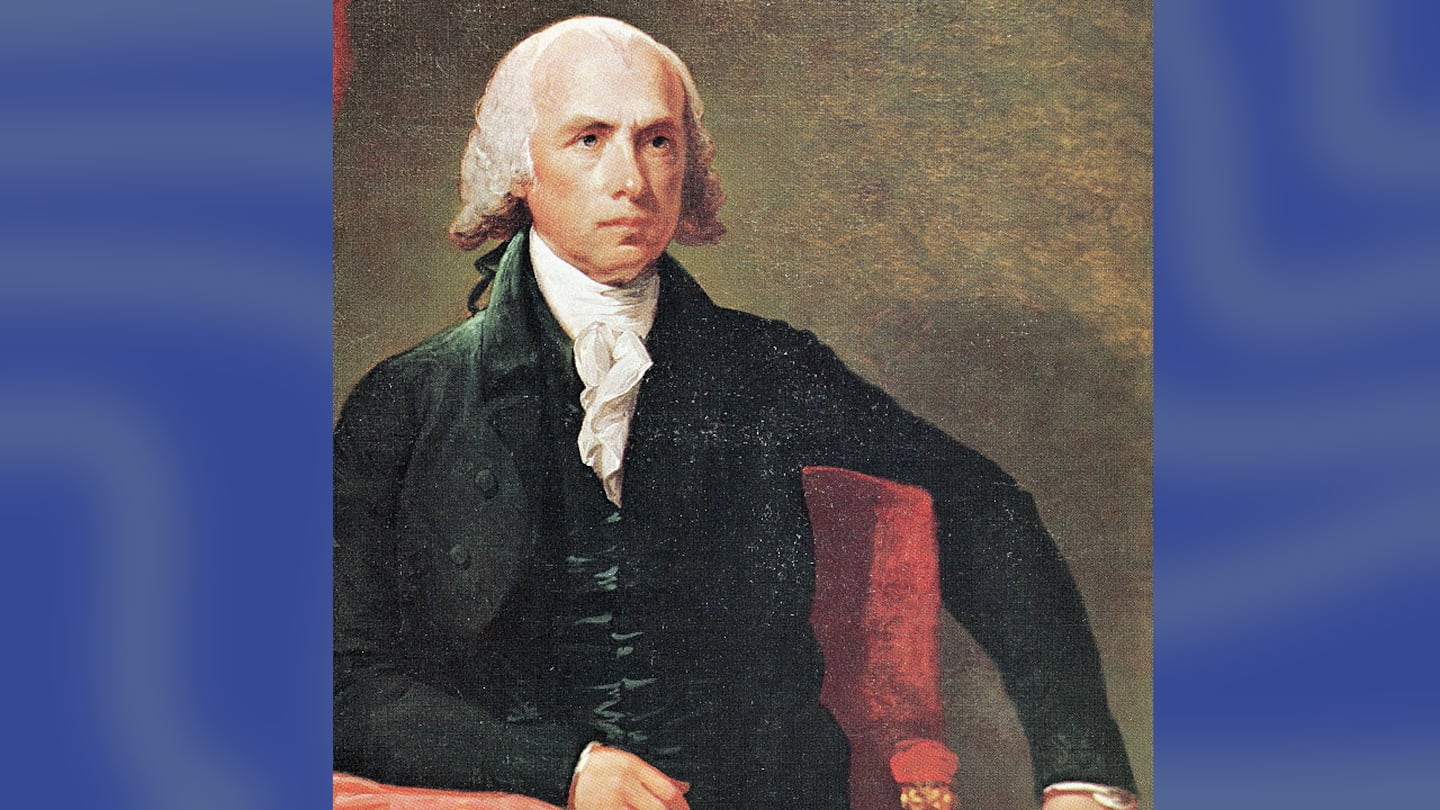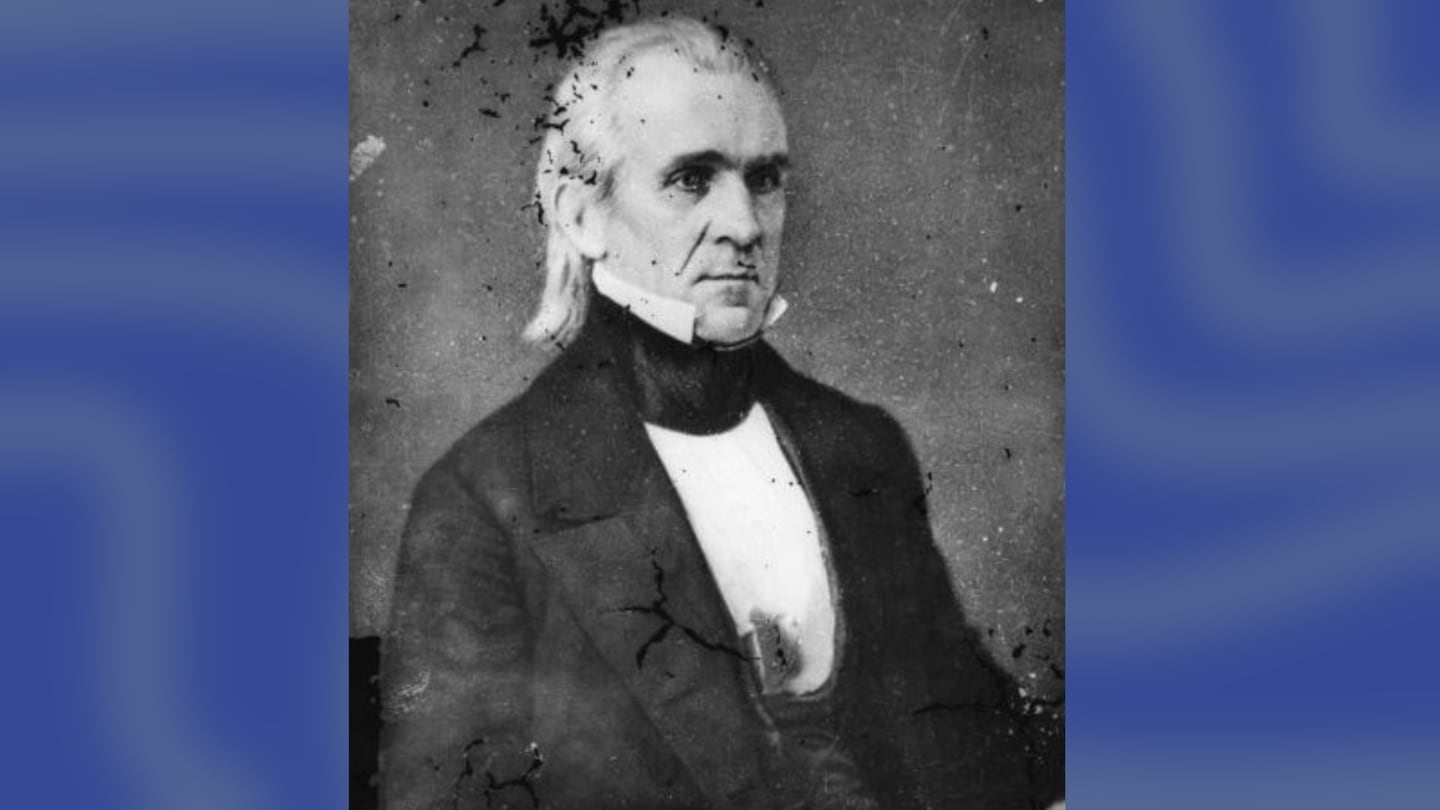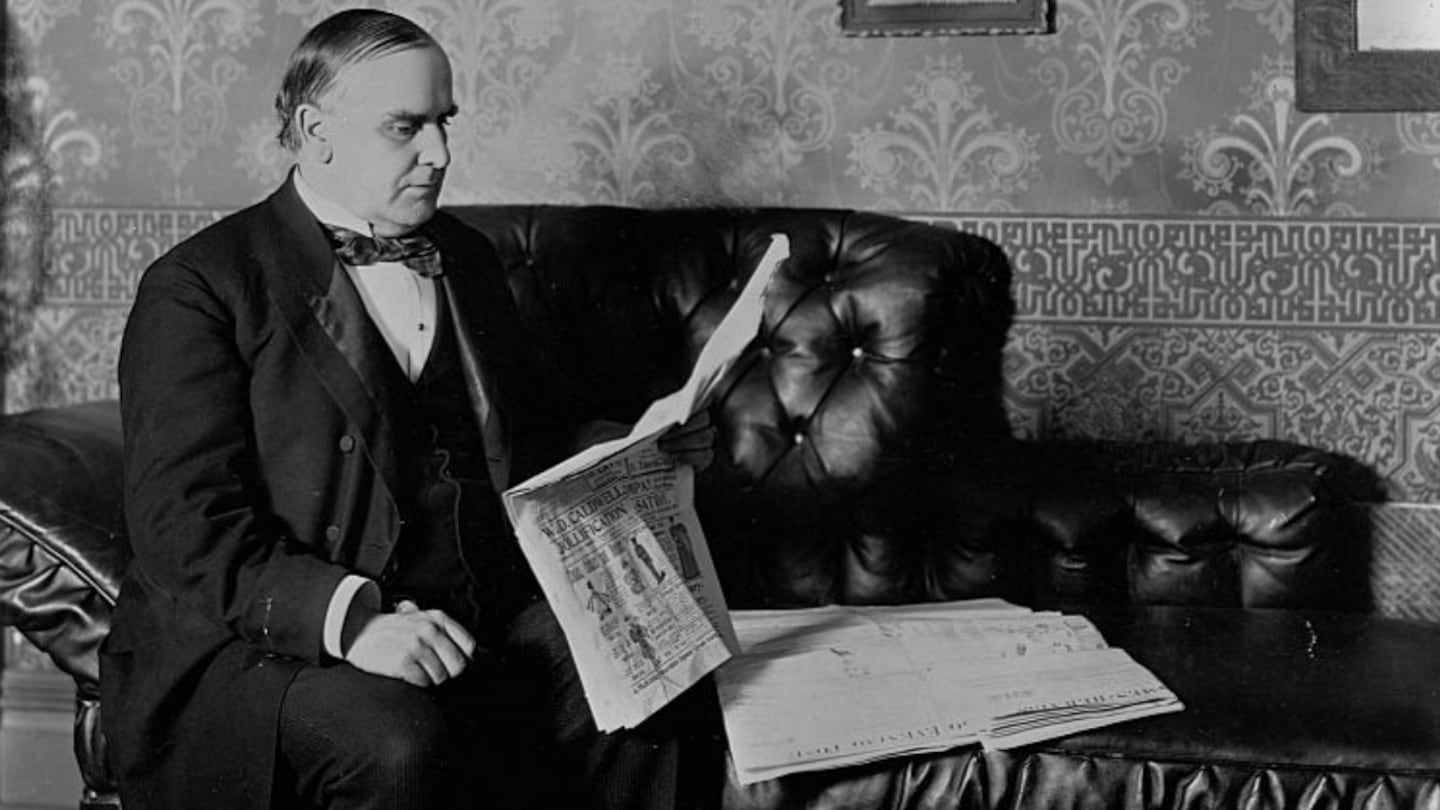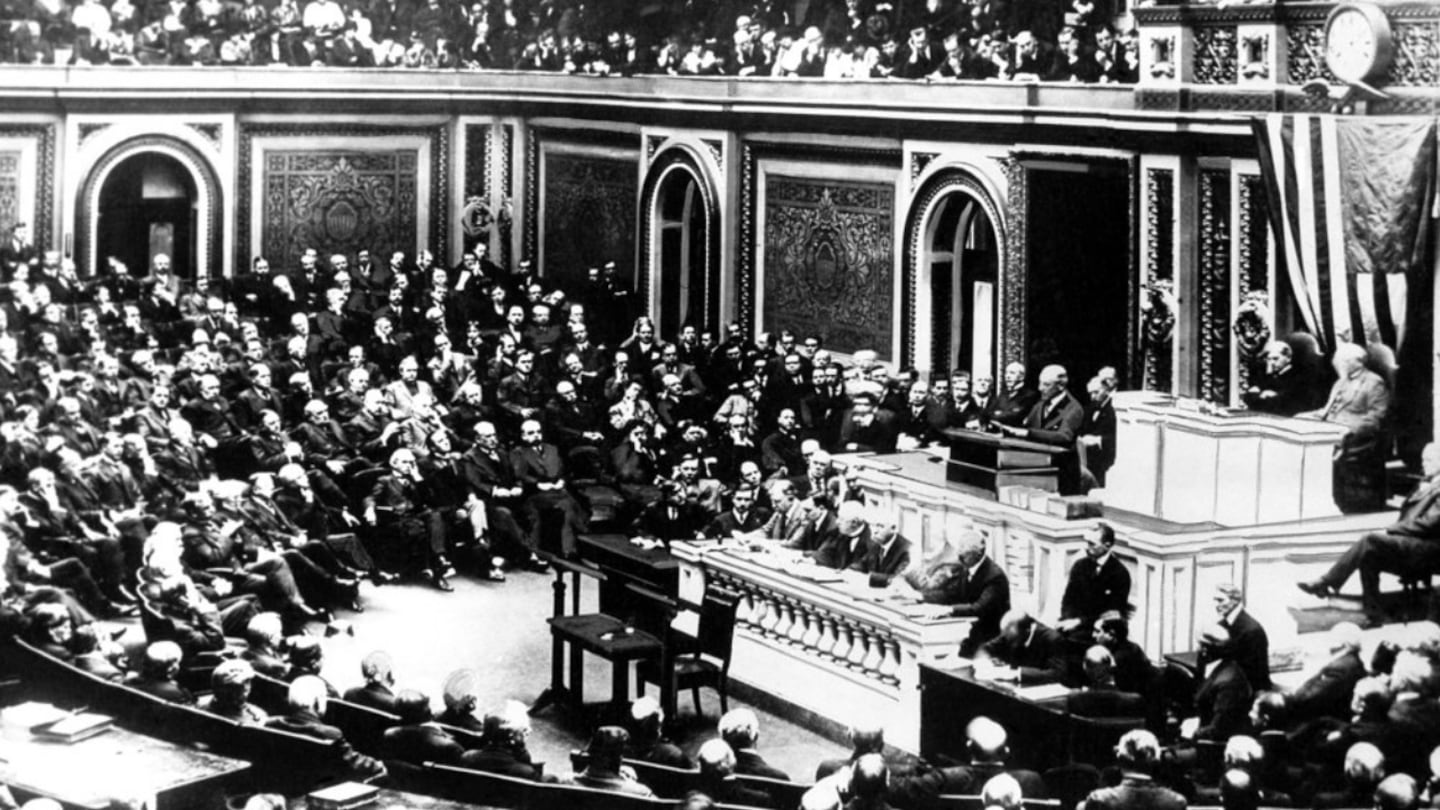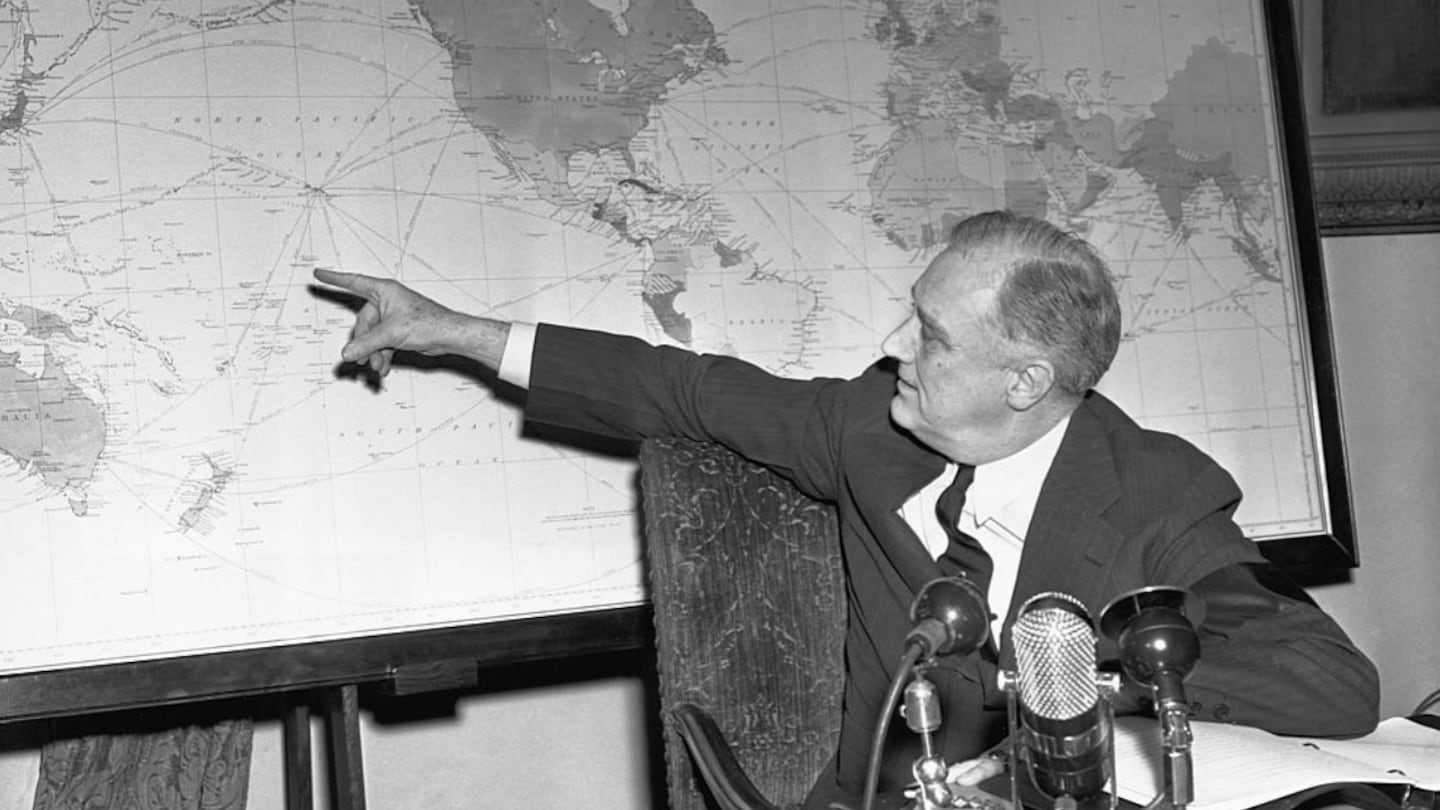The U.S. has been involved in several military conflicts since World War II ended in 1945 -- notably in Korea, Vietnam, Iraq and Afghanistan. But it has been 80 years since the U.S. “officially” declared war on another nation. That weighty decision belongs to Congress.
That prospect became a remote possibility -- although as a drastic last resort -- when Russian President Vladimir Putin on Monday signed decrees ordering military forces into Ukraine’s two separatist regions for “peacekeeping” purposes and recognized their independence, The New York Times reported.
That was followed by President Joe Biden’s announcement of sanctions against Russia for what he termed “the beginning of a Russian invasion of Ukraine,” according to the Times.
A declaration of war would be a major step, one not to be taken lightly. Congress has officially declared war only 11 times, spread across five conflicts.
On Dec. 8, 1941, President Franklin D. Roosevelt asked Congress to declare war against Japan in the wake of the attack on Pearl Harbor the previous day. That was followed by similar declarations passed by Congress three days later against Germany and Italy. In June 1942, Congress passed declarations of war against Bulgaria, Hungary and Romania.
The U.S. Constitution divides the power to declare war and the power to direct it, according to the Cornell Law School Legal Information Institute. Article 1, Section 8 of the Constitution gives Congress the power to declare war. Article 2, Section 2 of the Constitution names the president as commander-in-chief of the armed forces.
But what about U.S. military actions since World War II? In 1950, President Harry S. Truman responded to the U.N. Security Council’s request for help and committed ground forces after North Korea attacked South Korea. After presidents committed America’s military to combat operations in the Dominican Republic, Laos, and Vietnam without formally declaring war, Congress passed the War Powers Resolution in November 1973.
But according to the House of Representatives website, the War Powers Resolution “has had scant, if any, effect on the military decisions of sitting presidents.” According to the National Constitution Center, there have been more than 130 instances where the president acted under the provisions of the War Powers Resolution.
Here is a look at the times the U.S. has formally declared war.
War of 1812
The War of 1812 has also been called America’s second war of independence. President James Madison, angered by Great Britain’s refusal to respect U.S. neutrality in the war between the British and France, asked Congress on June 1, 1812, to declare war, according to the National Parks Service website.
The House passed the resolution by a 79-49 margin and the Senate approved it by a 19-13 vote. Madison signed the declaration of war on June 18, 1812. All of the affirmative votes in both houses were cast by members of the Democratic-Republican Party (which later became the Democratic Party). It was the closest vote in the formally declared wars, and the conflict would be known as “Mr. Madison’s War.”
“(War) is hereby declared to exist between Great Britain and her dependencies and the United States of America and their Territories,” the resolution read, according to History.com. “(And) the President of the United States is hereby authorized to use the whole land and naval force of the United States to carry the same into effect.”
Mexican-American War
The Mexican-American War, which was contested from 1846 to 1848, was sparked by a land dispute between Mexico and Texas. In 1836, Texas won its independence from Mexico, and the new republic was annexed by the U.S. as its 28th state in 1845.
Mexico, however, never relinquished its claims to its former territory, causing tensions with the U.S. Mexico attacked U.S. forces led by Gen. Zachary Taylor along the Rio Grande on April 25, 1846.
President James K. Polk sent a war message to Congress on May 11, 1846, claiming that Mexico had “invaded our territory and shed American blood on American soil.”
The House approved the measure by a 174–14 vote, and the Senate voted 40-2 the next day in favor of war.
Spanish-American War
The Spanish-American War in 1898 marked the end of Spain’s colonial empire in the Western Hemisphere and secured the position of the U.S. as a power in the Pacific.
The war was ignited by three years of fighting by Cuban revolutionaries to gain independence from Spain, according to the U.S. Department of State archives. Tensions between the U.S. and Spain reached a breaking point after the battleship Maine exploded and sank in Havana’s harbor under mysterious circumstances on Feb. 15, 1898, according to the Naval History and Heritage Command website.
President William McKinley sent a message to Congress asking for a declaration of war, which was passed unanimously by a voice vote in the House and Senate on April 25, 1898.
World War I
Woodrow Wilson won reelection in 1916 with the slogan, “He kept us out of war.” The war in Europe had been raging since the late summer of 1914, and Wilson convinced Germany to halt attacks on Allied civilian ships in the wake of the sinking of the Lusitania, a British passenger liner, by submarines on May 7, 1915. More than 1,100 people died, including more than 120 Americans, according to History.com.
But by 1917, the Germans decided to resume their attacks on civilian ships in the North Atlantic Ocean.
On April 2, 1917, Wilson asked Congress to declare war on Germany because of the submarine attacks and the discovery of the “Zimmermann Telegram.” That message, sent in January 1917 by German foreign secretary Arthur Zimmermann to the German minister in Mexico, promised that Germany would help Mexico get its land back from the U.S. in exchange for support in the war.
The Senate approved Wilson’s request by an 82-6 margin on April 4. Two days later, the House passed the decree by a 373–50 vote.
On Dec. 10, 1917, Congress passed a separate declaration of war against Austria-Hungary, citing the empire’s collaboration in German submarine attacks. The Senate approved the measure by a 74-0 vote, while the House passed it by a 365–1 margin. The lone dissenting vote was cast by Meyer London, a Socialist representative from New York.
World War II
The U.S. initially declared war on Japan on Dec. 8, 1941. Germany and Italy declared war on the U.S. the same day, and Congress would pass declarations of war against Germany and Italy on Dec. 11, 1941.
The attack on Pearl Harbor resulted in a nearly unanimous vote for war against Japan after Roosevelt addressed Congress. The Senate voted 82-0, while the House vote was 388-1. The lone vote cast against war was by Jeannette Rankin, a representative from Montana who was the first woman to serve in Congress who also voted against the declaration of war against Germany in 1917.
“As a woman, I can’t go to war,” Rankin said. “And I refuse to send anyone else.”
The declarations of war against Germany and Italy passed the Senate by votes of 88-0 and 90-0, respectively. The vote was also unanimous in the House, by margins of 393-0 (Germany) and 399-0. While Rankin did not vote for the measure, she voted “present in both instances.”
Declarations of war were passed unanimously against Bulgaria, Hungary and Romania in June 1942. They passed by margins of 357-0 (Bulgaria), 360-0 (Hungary) and 361-0 (Romania) on June 3. The measure passed the Senate by a 73-0 margin in each instance the next day.
©2022 Cox Media Group

